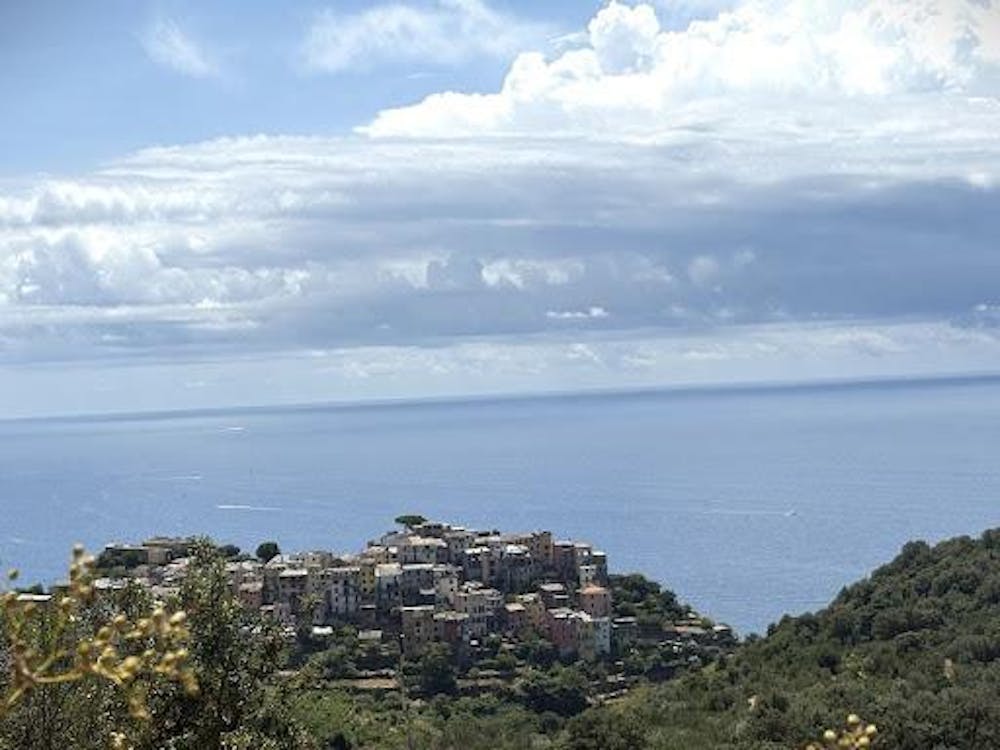Most college students wouldn’t think twice about traveling to Italy: it’s a classic travel destination with endless sightseeing, a rich history, delicious food, and gorgeous scenery. Yet I came to Italy on a slight whim and with some trepidation that, without an internship of summer-filling class, I wasn’t making the most out of my summer.
But you only live once, and fresh out of my first year at Princeton, this seemed like the best time to do something fun. After five weeks abroad, I’ve made amazing friendships and learned a lot — about the Italian language, culture, and myself. Most of all, my time in Italy has reiterated the importance of slowing down to make the most out of travel. I don’t regret it.
I came to Italy for the Princeton in Pisa program, a four-week summer immersion course led by Professor Anna Cellinese and held at Scuola Normale Superiore (SNS) — “the Princeton of Italy,” as several staff in the program called it. My curriculum was fast-paced and expansive: I dove into the meaning of beauty; discussed social, cultural, and political landscapes; learned about migration and multiculturalism in Italy; explored the concept of subversion; and participated in a writing lab — all in Italian.
I was thrilled to interview politicians and locals in Italian and learn about major geopolitical issues from both. For a prospective SPIA major, the philosophical components of our class discussions and film analyses were challenging, and I grew not only as an Italian speaker but also as a flexible thinker.
It is a cliche, but for all that I learned in the classroom, it’s true that I learned even more outside it. Though improving my fluency in Italian and partaking in weekly class day trips to nearby Tuscan towns were certainly highlights of the program, being in another country for such a long time was a gift in and of itself.
In a country that experiences mass tourism, it felt special to diverge from the mainstream tourist itinerary and experience the true Italian way of life — from slow meals at the SNS dining hall with friends laughing over the simplest jokes to late evening walks on the Arno River (the true local way to escape the intense Italian sun). Amid all the classic tourist sites, like the Tower of Pisa, the Duomo, and the Colosseum, I felt lucky to have the time to appreciate the never-ending field of sunflowers and the Dr. Seuss trees in the Tuscan countryside.
As I wrote in one class assignment, tourists here collide with the local lifestyle. They are always rushing to do or see something or to take another picture commemorating their activity. I can’t blame them — in fact, I was them at times on this trip — because there is simply so much to see in Italy.
And besides, traveling to Italy is a once-in-a-lifetime experience for many (me included) —- making the most of the trip often means a quick pace and an in-and-out stop at each attraction. However, the tourists’ haste to see and do so many things contrasts with the locals’ slow intention in going about their everyday activities — a wholesome kind of purpose they carry about in their daily affairs.

I learned early on that there is no multitasking here; I’m sure eating and working at the same time is legally considered a sin in Italy. A good meal with friends lasts hours, and to my delight, phones are rarely brought into the conversation. At least from what I saw (though I can’t speak much to the party scene), drinking, walking, working, and smoking is done mindfully, for the enjoyment of the activity itself.
As a foreigner, I’ve enjoyed integrating into this community-wide culture of intention in everyday activities. It may sound odd, but their live-in-the-moment, slow-paced lifestyle in a culture where time is only conceptual (except for the train system) helped ease the pressure that I created on myself to do everything in the tourist book. I gradually learned to slow down and enjoy the little moments, a skill that comes naturally to me at home but which I had to relearn completely as a traveler.
Indeed, this trip has taught me a lot about myself: I, too, have fear of missing out when it comes to traveling and consequently struggle unnecessarily to make otherwise fun decisions — Siena or Florence today? I have an awful sense of time: I’ve arrived heart-pounding and sweaty to one too many trains, and I thought that visiting all the attractions in Rome and the Vatican on foot was attainable in six hours (it’s not). And, I always believe I know enough about a place until a tour proves me wrong.
Here again, I learned the importance of slowing down. Though tours of historical sites and museums sometimes seemed silly to me — I could just read the signs, and then we could move on to the next big thing — I was always grateful for the tours I participated in because I gained a deeper understanding of the place. Taking the time to truly understand a place’s importance helped make my Italian experience richer.

If I’ve gotten anything out of my time here in Italy, it’s the importance of slowing down to take in the moment for the sake of the moment. So, in keeping with Italian culture, before I embark on long airplane flights and time changes as I fly home tomorrow, and then a busy rest of my summer at home, I’ll take a few minutes to shut my laptop and enjoy one last Italian sunset.
Annika Plunkett is a staff writer for The Prospect and a member of the Newsletter team. She can be reached at ap3616@princeton.edu.
Please send any corrections to corrections[at]dailyprincetonian.com








